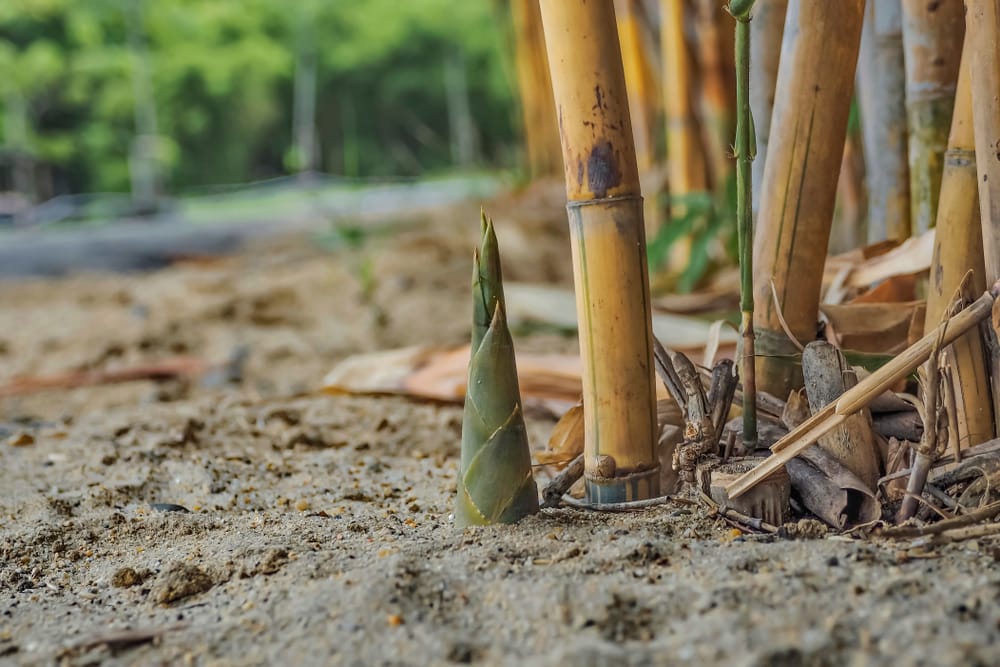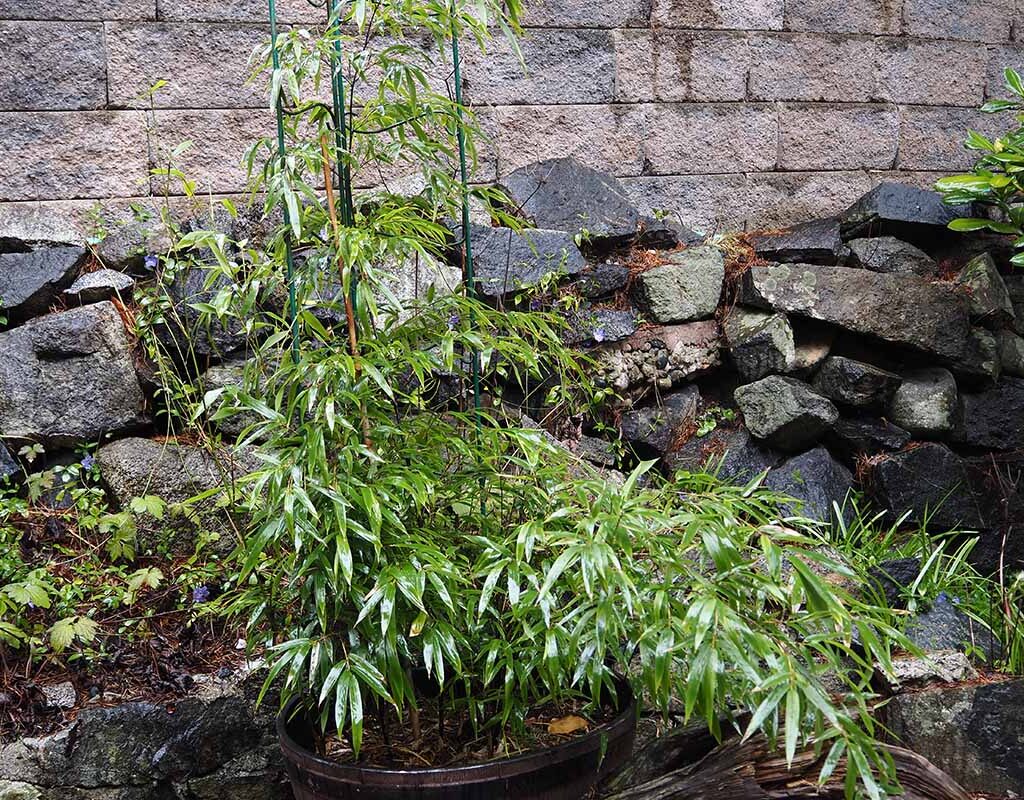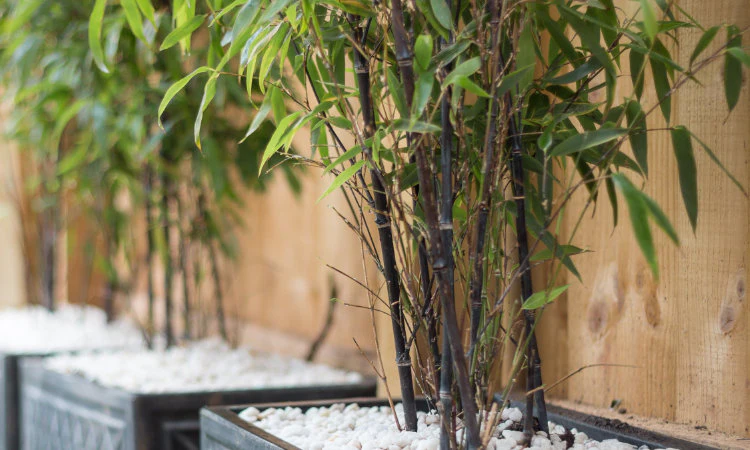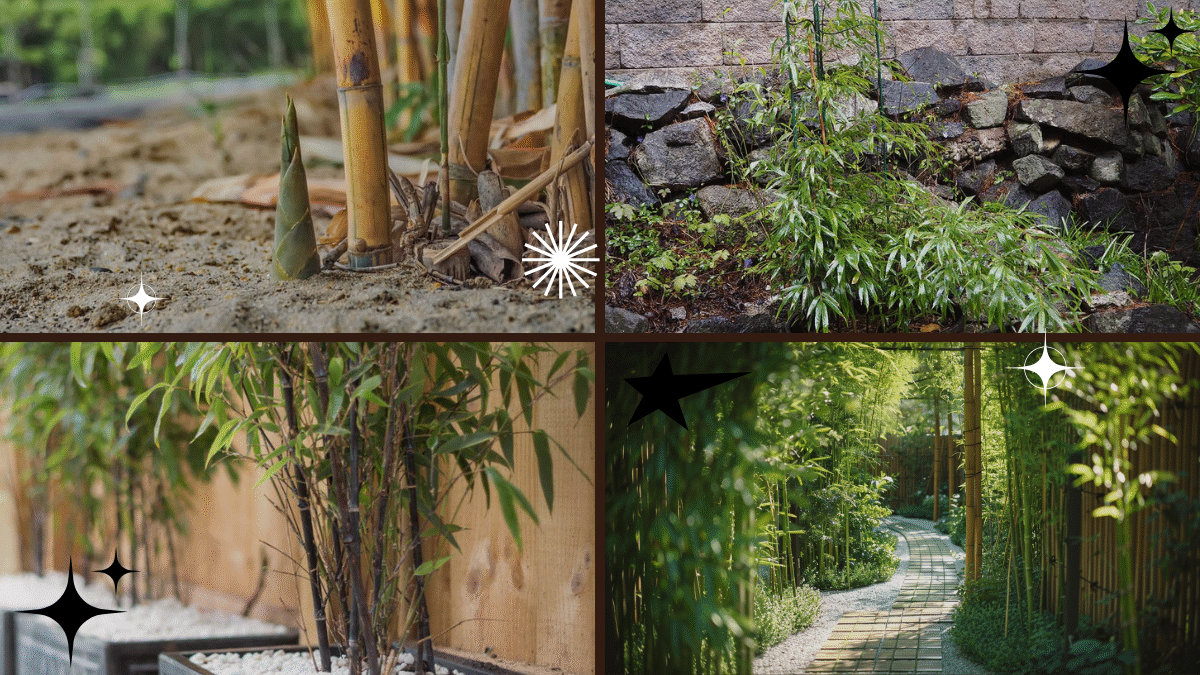Bamboo has long been a symbol of tranquility, strength, and grace in gardens around the world. Whether swaying gently in the breeze of a Zen-inspired courtyard or forming a lush privacy screen in a modern backyard, bamboo adds an unmistakable sense of elegance to any landscape. Fast-growing, hardy, and beautifully versatile, it’s no wonder more homeowners and gardeners are turning to bamboo for both ornamental and practical planting projects.
In this complete guide, we’ll show you how to plant bamboo, select the right varieties, care for your bamboo plants, and use them creatively to transform your outdoor space into a serene, natural haven.

Why Choose Bamboo for Your Garden?
Bamboo isn’t just a pretty face — it comes with a host of benefits:
- Fast-growing privacy screens and natural windbreaks.
- Low maintenance and drought-tolerant once established.
- Adds tropical beauty and texture to landscapes.
- Excellent for erosion control on slopes and uneven terrain.
- Can be grown in containers, raised beds, or open ground.
With over 1,000 species to choose from, there’s a bamboo variety for nearly every climate, purpose, and design style.

Types of Bamboo: Clumping vs. Running
Before planting, it’s essential to understand the two primary types of bamboo:
1. Clumping Bamboo
- Grows in tight, non-invasive clumps.
- Spreads slowly outward from the base.
- Easier to control, ideal for smaller gardens and decorative plantings.
- Popular varieties: Bambusa multiplex, Fargesia rufa.
2. Running Bamboo
- Spreads aggressively via underground rhizomes.
- Can cover large areas if not managed.
- Best for privacy screens or windbreaks but needs root barriers.
- Popular varieties: Phyllostachys aurea (Golden Bamboo), Phyllostachys nigra (Black Bamboo).
Pro Tip:
If you’re new to bamboo or working in a confined area, start with clumping bamboo for easier management.

Best Bamboo Varieties for Different Uses
| Purpose | Recommended Bamboo Varieties |
|---|---|
| Privacy Screens | Phyllostachys aurea, Bambusa oldhamii |
| Ornamental Displays | Phyllostachys nigra (Black Bamboo) |
| Container Gardening | Fargesia rufa, Bambusa multiplex |
| Cold-Hardy Plantings | Fargesia robusta, Phyllostachys bissetii |

When and Where to Plant Bamboo
Best Time to Plant:
- Spring or early fall, when soil temperatures are mild.
- Avoid planting in extreme heat or during frosts.
Ideal Location:
- Full sun to partial shade (depending on variety).
- Well-draining soil rich in organic matter.
- Protection from strong winds.
- Space for growth, especially for running varieties.
Soil pH should be between 6.0–7.0. Bamboo prefers slightly acidic to neutral soil.
How to Prepare the Planting Site
Healthy soil equals healthy bamboo. Follow these steps to prepare your site:
- Clear the area of weeds, grass, and debris.
- Loosen the soil to a depth of at least 18 inches.
- Mix in compost or well-rotted manure to enrich the soil.
- Install rhizome barriers (for running bamboo) — heavy-duty plastic or metal sheets sunk 24–30 inches into the ground around the planting area.
Note: Leave the top 2 inches of the barrier exposed to prevent rhizomes from jumping over.
How to Plant Bamboo (Step-by-Step)
1. Dig the Hole
- Make a hole twice as wide and deep as the root ball.
2. Amend the Soil
- Mix in organic compost to improve soil texture and nutrient content.
3. Position the Plant
- Place the bamboo in the hole at the same depth it was growing in the nursery pot.
- Spread roots gently if compacted.
4. Backfill and Water
- Fill the hole with soil, gently firming as you go to eliminate air pockets.
- Water thoroughly after planting.
5. Mulch
- Apply a 2–4 inch layer of organic mulch (like bark chips or straw) to retain moisture, suppress weeds, and regulate soil temperature.
Watering and Feeding Bamboo
During the first growing season:
- Water deeply 2–3 times per week.
- Keep soil consistently moist but not soggy.
After establishment:
- Water during dry spells.
- Less frequent watering needed for clumping varieties.
Fertilizer:
- Use a high-nitrogen fertilizer in early spring to encourage lush growth.
- Repeat light feedings in summer for best results.
Pruning and Maintenance Tips
- Remove dead or weak culms (stems) at ground level in late winter.
- Thin out older growth periodically to improve air circulation.
- Cut running bamboo’s rhizomes using a sharp spade to control spread.
- Top-dress with compost in spring for nutrients and moisture retention.
Pro Tip:
To keep running bamboo contained, trench around the planting area and cut back escaping rhizomes annually.
Growing Bamboo in Containers
If space is limited or you prefer a mobile garden, bamboo thrives in pots too!
Container Tips:
- Use a large, sturdy pot (at least 18 inches deep and wide).
- Ensure excellent drainage with holes at the base.
- Use loamy, well-draining potting mix.
- Water regularly — potted bamboo dries out faster than in-ground plantings.
- Fertilize monthly during the growing season.
- Repot every 2–3 years as bamboo outgrows its container.
Creative Uses for Bamboo in the Landscape
Bamboo is one of the most versatile plants you can grow:
- Privacy screens and hedges for patios or pools.
- Natural fences or windbreaks.
- Accent plants in tropical or Asian-style gardens.
- Erosion control on slopes and banks.
- Feature plants in modern container gardens.
- Use mature culms for DIY garden trellises, fences, and décor.
Common Bamboo Pests and Problems
Bamboo is generally tough, but watch out for:
- Aphids: Spray with water or neem oil.
- Spider mites: Increase humidity and wash leaves.
- Mealybugs: Remove by hand or use insecticidal soap.
Fungal issues (like sooty mold) typically result from pest infestations and clear up once pests are managed.
How to Overwinter Bamboo
In colder climates:
- Mulch heavily around the base of plants.
- Water well before the first hard frost.
- For containers, move bamboo to a sheltered, unheated garage or shed.
- Choose cold-hardy varieties for year-round outdoor growth.
Final Thoughts
Adding bamboo to your landscape is a surefire way to introduce elegance, privacy, and tropical charm to your garden. Whether you opt for a dense privacy hedge, a decorative feature plant, or a container-grown specimen, bamboo’s graceful beauty and fast growth make it a favorite for gardeners everywhere.
With the right site preparation, mindful planting, and regular care, your bamboo will thrive for years — transforming your outdoor space into a lush, serene sanctuary.
So, why wait? Bring home your bamboo today and watch your garden take on a whole new dimension of natural elegance!





Leave A Comment